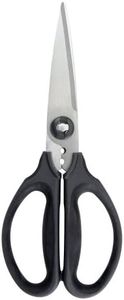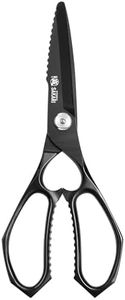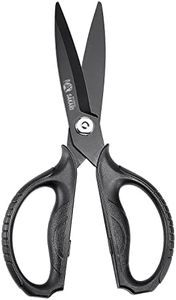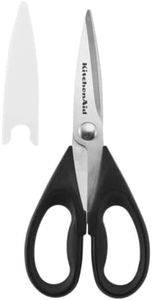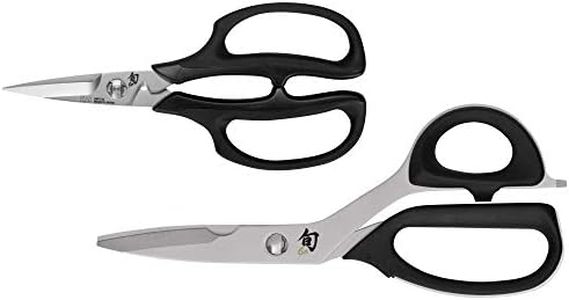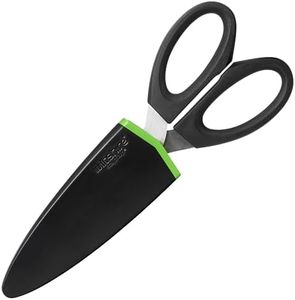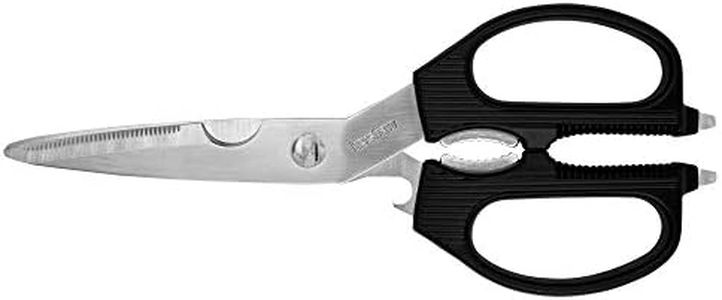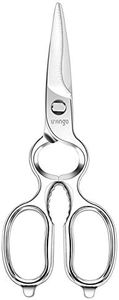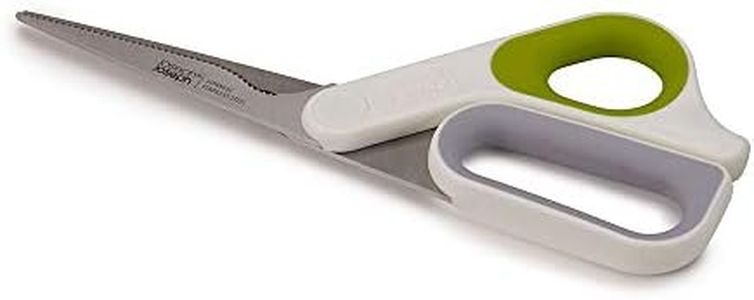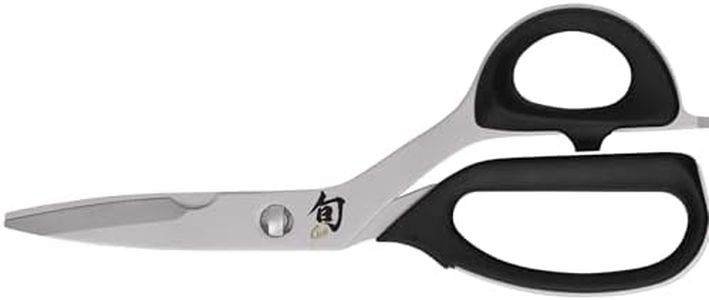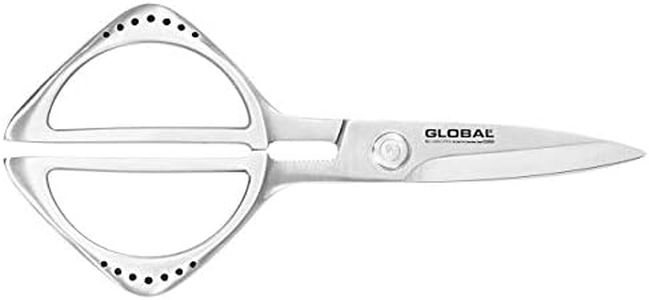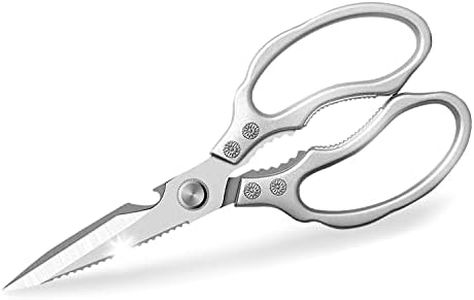We Use CookiesWe use cookies to enhance the security, performance,
functionality and for analytical and promotional activities. By continuing to browse this site you
are agreeing to our privacy policy
10 Best Kitchen Shears
From leading brands and best sellers available on the web.Buying Guide for the Best Kitchen Shears
Choosing the right kitchen shears can make food preparation quicker and safer. Kitchen shears are a multitasking tool in the kitchen, useful for cutting herbs, trimming meat, opening packaging, and even snipping twine. The key to finding the best kitchen shears is understanding which features matter most for your cooking style, comfort, and types of tasks you do most often. By focusing on the right specs, you'll be able to pick shears that feel good in your hand, stay sharp, and are easy to keep clean.Blade MaterialThe blade material impacts the shears' longevity and how well they handle different foods. Stainless steel is the most common material because it's resistant to rust and corrosion and holds an edge well, making it suitable for most kitchen tasks. Some premium blades might be made with high-carbon stainless steel for extra sharpness and edge retention. If you mostly cut soft foods and packaging, basic stainless steel will work fine. If you often cut through hard materials like bones or tough stems, look for higher-grade steel for strength and sharpness.
Handle Comfort and GripHandle comfort refers to the design and padding of the handles, which affects how easy and pleasant the shears are to use, especially for extended periods. Handles may be made from plastic, rubber, or a combination for grip and ergonomics. If you have large or small hands, or if strength and comfort are priorities (perhaps you have joint pain or cut large amounts), test the handle feel to ensure a secure and comfortable grip. Soft, non-slip grips are best if you'll use the shears frequently or for tougher jobs.
Detachable BladesSome kitchen shears have detachable blades, meaning the blades can be separated for thorough cleaning and sometimes even sharpening. This feature is important for hygiene, as it helps you clean hard-to-reach spots where food debris might get stuck. If you mainly use shears for meat or sticky ingredients, detachable blades are especially helpful. If you dislike fiddling with moving parts, simple, non-detachable shears may suit you better.
Blade SerrationBlade serration refers to a small saw-like edge on one or both blades, which helps grip slippery foods like poultry skin or tomatoes. Serrated blades are helpful if you often slice through tough or slippery items, as they reduce the chance of slipping and requiring extra force. If most of your cutting is light or on packaging and herbs, a smooth blade is sufficient, but serrated blades are more versatile for varied kitchen work.
Additional Features (e.g., Nutcracker, Bottle Opener)Some kitchen shears include extra tools in the handle, like a nutcracker, bottle opener, or screw cap grip, to add versatility. If you prefer multipurpose tools or have limited space, these additions can be handy. However, if you value simplicity, traditional shears without extra features are lighter and often easier to handle and clean.
Ease of CleaningHow easy the shears are to clean affects both safety and convenience. Shears that come apart are simple to wash by hand or in the dishwasher, reducing the risk of bacteria buildup. Dishwasher-safe shears are great for people who want to minimize hand washing, but always check care instructions. If you often handle raw meat or cut sticky foods, prioritize easy-clean features.
